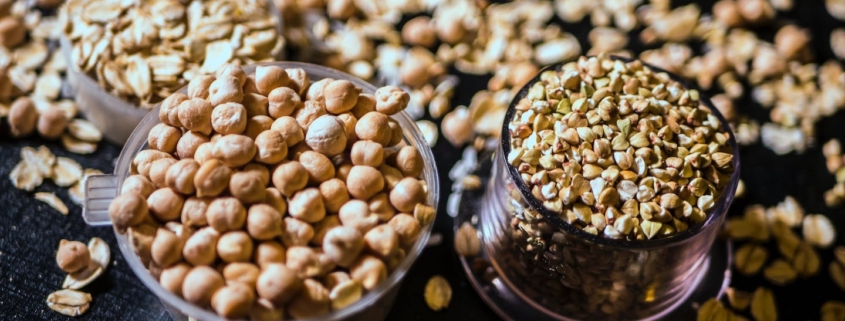Delving into the Health Benefits This National Fiber Month
 Many Americans fall short of meeting their daily recommended fiber intake, a vital nutrient found in various foods such as fruits, vegetables, and grains. Explore the role of fiber in the diet this January during National Fiber Month.
Many Americans fall short of meeting their daily recommended fiber intake, a vital nutrient found in various foods such as fruits, vegetables, and grains. Explore the role of fiber in the diet this January during National Fiber Month.
As a type of carbohydrate, fiber, referred to as roughage or bulk, originates from plant starch, and your body cannot break it down into usable energy. Its benefits encompass regulating bowel movements, lowering blood glucose and cholesterol levels, and enhancing satiety.
Grains, a dietary staple, represent another source of fiber that has contributed to people’s well-being for centuries. Well-known whole grains like whole wheat pasta, cereals, brown rice, and oatmeal offer excellent health advantages. Additionally, there are equally delectable ancient grains that have played a role in promoting health over the years.
Types of Fiber
There are two types of fiber, insoluble and soluble fiber. Most foods contain a mix of the two types of fiber, but it will depend on the food.
Insoluble fiber’s job is to keep your intestinal tract healthy by attracting water to the intestine, softening your stool. It will also reduce the amount of time that food sits in your intestinal tract. You want this to happen because if food sits there too long it can cause constipation. Food sources: wheat bran, whole grains, fruits, and vegetables.
Soluble fiber’s job is also to soften stool and ferment in the intestines to produce healthy gut bacteria. This enhances your immune system to fight infection and chronic disease. Soluble fiber also aids in lowering your blood cholesterol by reducing the amount of dietary cholesterol your body absorbs. Food sources: dried beans, peas, lentils, oats, barley, fruits, and vegetables like carrots and squash.
Ancient Grains 101
Ancient grains have been increasing in popularity over the last few years due to their health benefits and flavor profile. Here are just a few worth trying:
Bulgur Wheat is a staple food in the Middle Eastern diet. It is a form of whole wheat and is easy to cook, requiring only soaking in boiling water for at least 30 minutes (2 cups liquid to 1 cup bulgur). Its robust flavor makes it a healthy change from rice or potatoes. It is an excellent source of insoluble fiber, promoting regularity and preventing constipation. There are 3 types of bulgur: Course bulgur used as a substitute for rice, medium bulgur used for cereal, and fine bulgur used in Middle Eastern dishes such as tabbouleh salad.
Quinoa was a staple food of the Incas over 5,000 years ago and was believed to give them power and stamina for fighting their warriors. Today it still holds true to be a healthy grain, containing quite a bit of protein, equivalent to that in milk. It has a light, delicate taste, and cooks quickly to a fluffy texture. Quinoa should be rinsed under cold, running water and drained before cooking to remove any residue. First, toast the grain in a dry skillet for 5 minutes, then add 2 parts liquid to 1 part quinoa and bring to a boil. Simmer until the germ spirals out from each grain. Quinoa can replace rice in pilaf dishes.
Couscous originated in Morocco and is made of small balls of dried semolina dough. It is a good source of protein; one cup contains 12% of the daily value. It also contains an excellent source of the antioxidant selenium. Significant sources of selenium are hard to find in food products, however a cup of couscous provides 61 percent of the recommended amount.
Amaranth is another high protein-containing grain. The whole seeds can produce an oatmeal-like porridge. It is best to cook amaranth with rice or buckwheat to enhance the taste. Amaranth can be popped like popcorn for a healthy snack.
As we celebrate National Fiber Month, let’s make a conscious effort to embrace the richness of fiber in our diets, promoting not just digestive health, but overall well-being.


Leave a Reply
Want to join the discussion?Feel free to contribute!